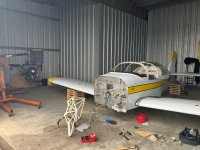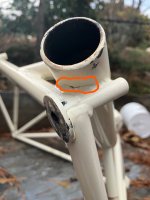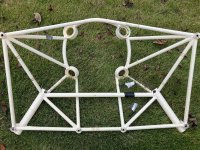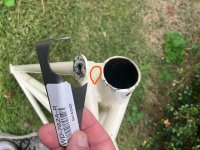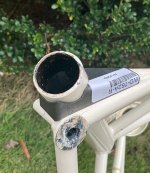Kyle Boatright
Well Known Member
My -6 has the cracks in/around the gear sockets that seem to happen as the hours pile up. I've ordered the reinforcing gussets from Van's and plan to pull the mount and have it repaired in the next few weeks.
For those of you who have been there/done that, how'd you support the aircraft while the gear was off? Jacks or blocks under bolts in the tie-down points? A sturdy platform under the fuselage?
Thanks in advance.
For those of you who have been there/done that, how'd you support the aircraft while the gear was off? Jacks or blocks under bolts in the tie-down points? A sturdy platform under the fuselage?
Thanks in advance.



